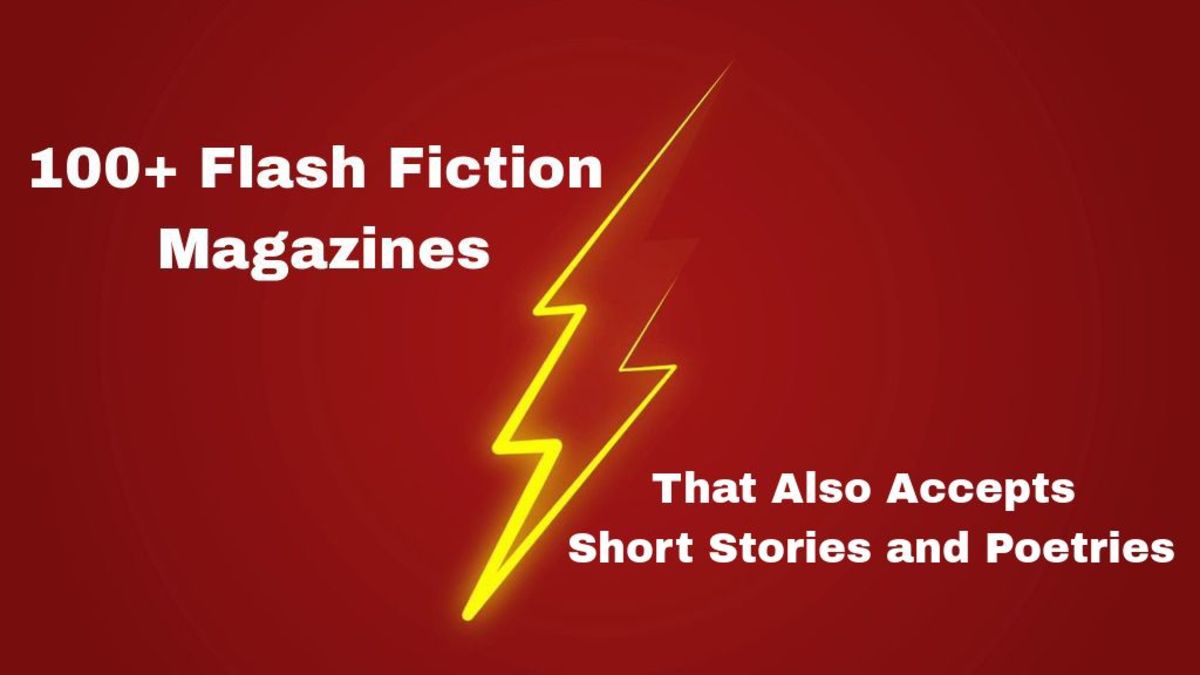- HubPages»
- Books, Literature, and Writing»
- Commercial & Creative Writing»
- Creative Writing
Keeping it Short and Sweet- Flash Fiction
Flash Fiction: For Life On The Go
Short stories have long held appeal to readers who lead busy lives. Many of the works of Charles Dickens were originally serialised to be digested in bite size instalments and Sherlock Holmes came to prominence over fifty-six short stories, with only four of his adventures taking the form of novels during the time of Sir Arthur Conan Doyle.
Readers enjoyed these short stories which could be consumed in one sitting with exposition, development and conclusion all being achieved within a relatively short time. The use of chapters within novels can also be seen as an attempt to create natural pause points within a story in an acknowledgement that readers are unlikely to want to sit through 70,000 words (or more!) without significant breaks.
Since then the idea has evolved, and now flash fiction (or micro fiction, or short, short fiction, or whatever else you want to call it) is seen as a distinct separate art within literature.
In this article I will be taking a brief look at the history of flash fictions and looking at a few samples of flash fictions in action, including one that I wrote myself about the danger (and seduction) of procrastination- the natural predator of the sloth-like writer..
Procrastinate
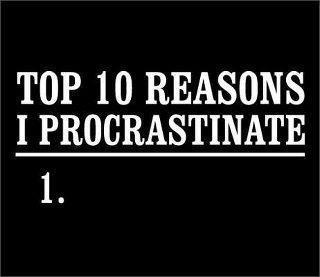
Aside: Writers- You Can Use Flash Fiction To Overcome Writers Block
Regardless of what type of prose you are interested in writing it is very useful to practice flash fictions, as they force a writer into being economical with words. In a good flash fiction there can be no over writing, because words are at a premium. Flowery language must be justified at all times, and the story must still be told in a way which engages the reader.
It is also a useful tool in combating procrastination...when you find yourself putting off working on a project it can be therapeutic to try writing something else to get your mind focused on the creative process. Flash fictions allow you to write something quickly which gets the creative juices flowing but doesn't take up the entire day. And if you like what you are writing you can always return to the idea and develop it later. A rare win/win.
Don Quixote
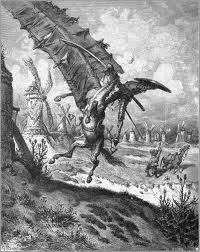
A Brief History Of Short Fiction
Flash fiction as a term was first used for the 1992 anthology Flash Fiction: Seventy-Two Very Short Stories whose editor, James Thomas, defined a flash fiction as one which would fit on two pages of a typical digest sized magazine.
The term increased in popularity and replaced the term short, short story for stories under two thousands around the millennium, and it now covers a host of story types from micro-fiction (or micro-story), which are typically described as under three hundred words, through to sudden story which are typically those of above one thousand but under two thousand words. However, none of these are fixed rules and if you are submitting a story always check the submission rules for the publications guidelines.
Flash fictions evolved from modern short stories which themselves evolved from the novel.
Modern prose fiction began it's life with the novel The Ingenious Gentleman Don Quixote of La Mancha (more commonly known as just Don Quixote) by Manual De Cervantes which is dated 1605. It is the first example of the modern novel and it is credited as being the inspiration for much of the work that came later.
Short stories followed much later and came from the tradition of oral story telling. The first formal collection of short stories using narrative prose was published in around 1810 although numerous individual short stories had begun being published in the last years of the eighteenth century. There are other examples such as The Canterbury Tales which pre-date this, but they are part of a separate tradition of narrative verse, not narrative prose, and so discussion of those is best left for a fuller conversation on the history of story telling. A discussion I doubt I will lead.
The earliest short stories were often gothic tales with writers such as Edgar Allen Poe and Nathaniel Hawthorne gaining fame. Other mysterious stories were also popular and Washington Irving's tale The Legend of Sleepy Hollow (1820) will be known to many following its recent adaptation into a film starring Johnny Depp, and the even more contemporary television series with Tom Mison.
The Legend of Sleepy Hollow
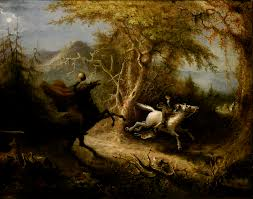
Edgar Allen Poe changed the future shape of short fiction when he wrote the first detective story The Murders in the Rue Morgue- the protagonist, Dupin, going on to be one of the inspirations for Sherlock Holmes. Crime and detective shorts have gone on to be amongst the most successful examples of short fiction. Poe is known to have said that true literature short be possible to read in one sitting
Short stories have also had a strong presence in much genre writing, particularly science fiction with numerous publications bringing us such writers as Arthur.C.Clarke, Isaac Asimov and Ray Bradbury to name just a few, all of which were among the pioneers of the very short story as they were then known. .
The short, short story has a long and dignified history in its own right, despite the contemporary feel to flash fiction. The history goes back a long way to collections such as Aesop's Fables which date back to ancient Greece and are thought to have been compiled in the 6th century BC.
Hemmingway- Modern Pioneer of Short, Short Fiction
Many of the writers named above, and more, have been known to write what would now be described as flash fiction, but without a doubt the real modern day pioneer of the short, short story is the great American writer, Ernest Hemingway.
In 1923 Hemingway published In Our Time, a collection of eighteen vignettes. Each was a short story or a short, short story which could be read in its own right, but each was also numbered like the chapters in a book and when were read in the correct order they were thematically linked to create a broader story such as those seen in novels.
Yet perhaps Hemingway's greatest, if most hotly disputed, contribution to the world of flash fiction is the shortest story ever told. The tale goes that Hemingway was sitting at a table with some of his closest friends, who were also writers, and he bet them that he could tell a full story with a beginning, middle and end in only six words. All present took him up on the bet and he duly wrote six words on a napkin and passed it around the table before duly collecting his winnings from all present. The words he wrote took on the form of an advert and make up a story which is not only the shortest but is also, in my opinion, one of the most tragic stories ever told: For Sale, baby shoes, never worn.
Hemingway's Shortest Story
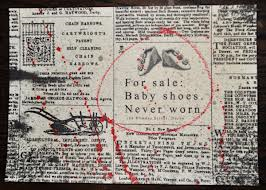
What makes a great flash fiction?
Flash fiction should have the same elements that make a great novel: A beginning, a middle and an end. They should also try to include exposition, crisis, climax and resolution in the same way that short fiction and longer fiction does.
What makes flash fiction different to the others is the point at which you enter and leave the story. There is no room for extra characters so usually they will focus on one character unless interaction is vital. The story is usually not entered at the very beginning either. It is entered at the time of crisis or resolution, or near to it, but clues are to the reader to inform the rest of the story. Often they end with only a hint of the resolution leaving the reader to bring their own conclusion.
To use the example from Hemingway that is above the start, middle and end are pretty obvious. We enter the story post resolution and it is not an happy one. We know that a baby was conceived and probably born- but we also know the parents of the baby never put the shoes on the baby and are now selling them. The six words carry a melancholy with them which the reader brings to the story. We suspect a child has died leaving behind a grieving family. We can suspect that the death occured during birth, or immediately after, because the baby shoes are not worn. The crisis has past and we are entered into the tragic world post-crisis- the resolution. Where the grieving parents are selling the items that they will never need.
The story is complete, but most of it takes part in the imagination of the reader, Hemmingway provides a few brief details and we provide the story.
A very quick guide to writing a flash fiction
Please watch the video for brief description of how to write a flash fiction. Comment at the bottom if you would like me to write a future hub exploring how to write a flash fiction in more detail.
The Biscuit Tin- An Example of Micro-Fiction
I'd like to finish by exposing you to an example of flash fiction, or micro fiction, or short-short fiction, whatever you want to call it. I wrote this a while ago to try to explore writers block and procrastination a little. I hope you enjoy it.
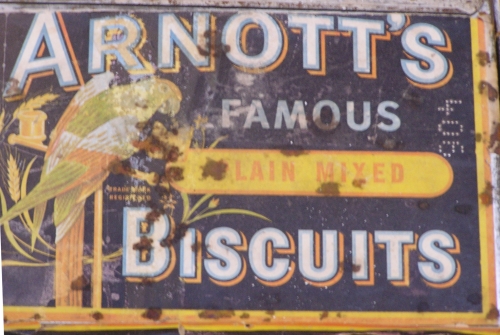
The Biscuit Tin
Sitting in a tattered robe at his desk, tapping fingers involuntarily creeping over chipped varnish and coffee stains, past a lonely notepad towards a dented tin, the man waits.
As shadows thicken around him he takes the last match from a crumpled box and lights a solitary tallow candle. Its acrid scent fills the small room, smoke rising to sting eyes, dark ringed and hooded, which are fixed on the battered tin. A twitch along his jaw, in perfect rhythm with creeping fingers, tells of his temptation. Looking over the candle he catches his own reflection in the window and sees Dante running from his Muse.
He watches the flame dwindle and his confidence sinks with it. Every word that has come before defies his future, each inspiration that has flown from his pen as effortlessly as birds gliding on warm currents conspires against new rivals. As the shadows merge into fanged darkness, he accepts that everything before was magic cruelly cast to make him believe, for a time, that the world belonged to him.
The flame flickers and dies.
The man gets up and walks to a corner of the room and switches the light on. He shuts the curtains and leaves the room, returning a few minutes later sipping from a chipped mug of black coffee.
The man sits down at the desk once more and pulls the notepad towards him. He takes an old biro from the binding and, hesitantly, writes a single word on the page, followed by another and another until, eventually, the gentle susurration of pen on paper seduces him.
It is many hours later when the writer puts the pen down and gingerly reaches for the tin.


